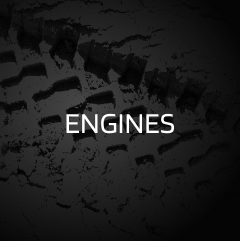 CCA Spares
CCA Spares
Exploring the Engine Block – the Heart of the…
As we venture deeper into the anatomy of internal combustion engines, our attention turns to a robust and foundational component: the engine block. Often referred to as the heart of the powerhouse, the engine block provides the structural integrity and housing for critical engine elements. Join us as we explore the intricacies of this essential component.
Foundation of the Powerplant:
The engine block serves as the foundation upon which the entire internal combustion engine is built. Composed of cast iron or aluminum alloy, the block houses the cylinders, crankshaft, and other crucial components. Delve into the structural considerations that make the engine block capable of withstanding the intense forces and heat generated during combustion.
Cylinder Arrangement:
Engines come in various configurations, each with a unique cylinder arrangement. From inline and V-shaped engines to horizontally opposed configurations, the engine block adapts to these layouts. Explore the implications of different arrangements on engine balance, performance, and overall design.
Cylinder Bore and Stroke:
The dimensions of the cylinders, specifically the bore (diameter) and stroke (length of piston travel), play a significant role in engine characteristics. Uncover the relationship between cylinder dimensions and engine displacement, and how these factors influence power output and torque.
Coolant Passages:
Efficient cooling is essential for preventing engine overheating. The engine block features intricate coolant passages through which a liquid coolant circulates, absorbing and dissipating heat. Understand the importance of these passages and how they contribute to maintaining optimal operating temperatures.
Crankcase:
The lower section of the engine block, known as the crankcase, houses the crankshaft. Explore the design considerations that ensure proper lubrication and protection for the crankshaft bearings. Learn about the oil passages that facilitate the circulation of lubricating oil to critical engine components.
Integrated Components:
Engine blocks are often designed with integrated components, such as the engine mounts and motor mounts. These components contribute to the overall stability and smooth operation of the engine, minimizing vibrations and ensuring proper alignment.
Strength and Durability:
Engine blocks undergo rigorous manufacturing processes to ensure strength and durability. From the use of high-strength alloys to precision machining, discover the measures taken to create engine blocks capable of withstanding the demanding conditions of combustion.
Innovations in Engine Block Design:
Advancements in materials and manufacturing techniques continually shape the landscape of engine block design. Explore innovations such as aluminum alloy blocks, which contribute to weight reduction and improved fuel efficiency. Understand how modular engine block designs enhance versatility and adaptability in the automotive industry.
In conclusion, the engine block stands as the cornerstone of internal combustion engines, providing the necessary structure and support for critical components. This article has offered a comprehensive exploration of its functions, design considerations, and contributions to overall engine performance. Stay tuned for the next installment as we continue our journey through the intricate components of internal combustion engines.

